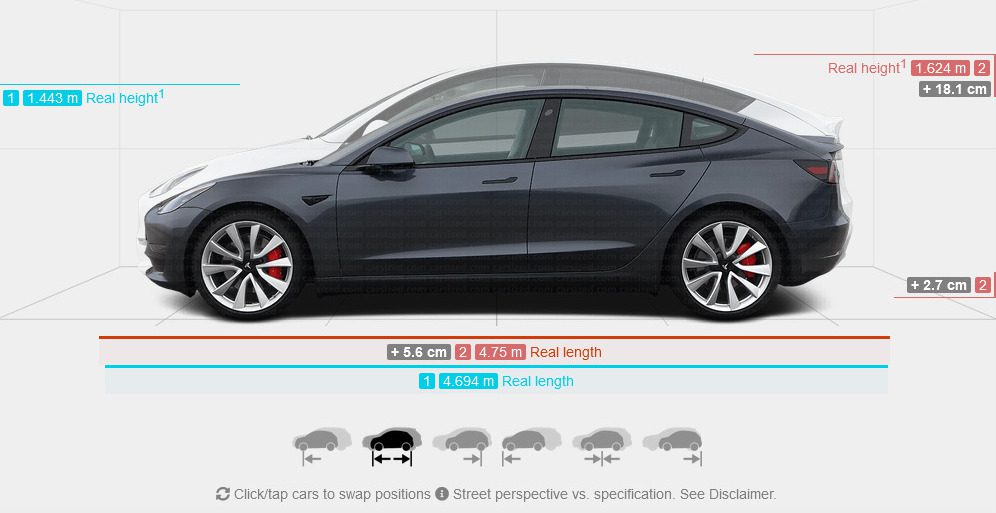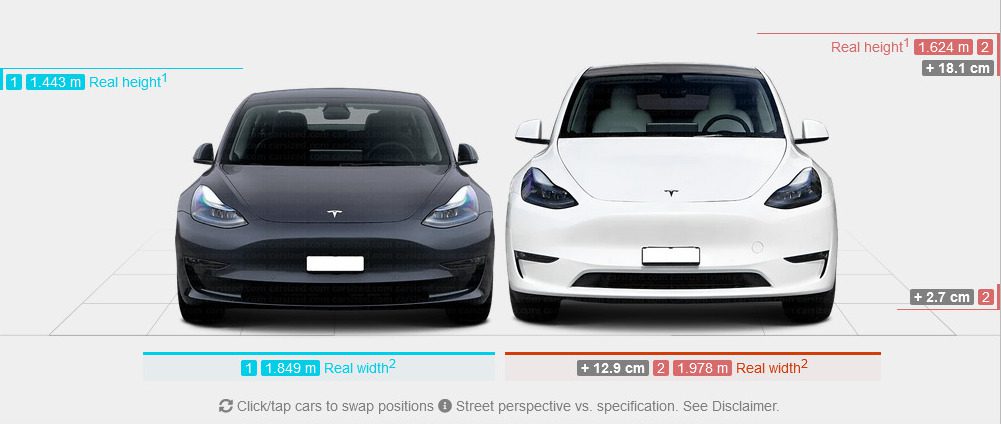It’s a long way from being bigger than Jesus, but all signs point to the Model Y crossover generating huge interest compared to Tesla’s Model 3 sedan. And it’s not just bigger in terms of interest, it is a larger vehicle in many ways (and in other ways, it is not).
Orders numbering in the thousands for the Tesla Model Y since it went on sale in Australia underline just how appealing the larger SUV is for many drivers.
Within hours of going live, Tesla had taken three months’ worth of orders. As of Monday afternoon, wait times had been pushed out by another three months to early 2023.
Tesla CEO Elon Musk has now said that the EV maker is working on accelerating production of the right-hand-drive Model Y after it went on sale in Australia, Japan and Singapore. It would appear that the prediction that the Model Y would be more popular than the Model 3 may indeed prove true locally.

But the reaons for the Model Y’s popularity became evident on Friday when I had a chance to see and sit in one. It’s roomy, easy to get in and out of, and its rear hatch and back seats that fold down flat make hauling stuff simpler and even hanging out in it that much more inviting.
See also : Tesla Model Y first impressions: More space, higher ride, bigger clearance
Quite simply, the larger dimensions and SUV style of the Model Y mean it appeals to a wider audience.
But what are the actual differences in measurements of the Model Y compared to the Model 3? Thanks to carsized and other sources, we can offer you the following insights.
Tesla Model Y versus Tesla Model 3
Firstly, we can see there is a difference of 181mm in height between the Model Y and Model 3. This is very evident when standing next to both vehicles, and it is only in part due to a difference in ground clearance (167mm compared to 140mm).
The rest of the difference is in the interior space of the Model Y, where 154mm extra height is extremely noticeable adding up to a lot more headroom, particularly in the back.

Model Y and Model 3 wheelbase, width and length
Surprisingly, although the Model Y is 4,750mm long compared to the Model 3’s 4,694mm length, the former’s wheelbase is only marginally longer at 2,890 compared to 2,880mm.
This means the Model Y has a slightly larger turning circle than the 3, at 12.1m compared to 11.8m.
The Model Y is also wider, by 129mm. Including mirrors, it is 41mm wider (2,129mm compared to 2,088mm).
However, this does not mean more space on the back seat for rear passengers unfortunately. While we haven’t had a chance to pull out the measuring tape ourselves just yet, online reports of rear seat width put the second row of both vehicles at around 1,330mm.

Model Y hatch versus Model 3 boot
At the back, the main difference of course is in the Model 3’s boot versus the Model Y’s hatch.
With an 853 litre cargo capacity compared to the Model 3’s 542 litres, there is loads more space even with the back seats in upright position. With the back seats folded down flat (the Model 3 seats fold down, but not flat), the Model Y has 1,925 litres cargo space.
With a 700mm higher opening, it is easier to get things (and yourself if using it for camping!) in and out of the back.


Bridie Schmidt is associate editor for The Driven, sister site of Renew Economy. She has been writing about electric vehicles since 2018, and has a keen interest in the role that zero-emissions transport has to play in sustainability. She has participated in podcasts such as Download This Show with Marc Fennell and Shirtloads of Science with Karl Kruszelnicki and is co-organiser of the Northern Rivers Electric Vehicle Forum. Bridie also owns a Tesla Model Y and has it available for hire on evee.com.au.


